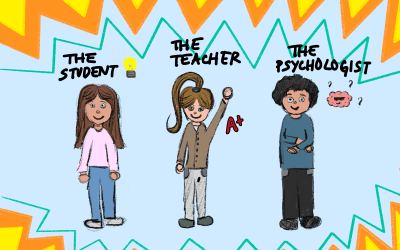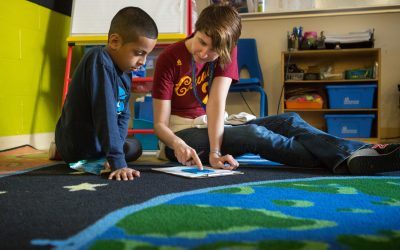As race-related events, gender politics, and mass shootings permeate the news cycle over the last few months, you may be wondering how you might address some of these issues in your classroom. For some teachers, facilitating a controversial discussion about race, gender, or even the environment may come easy, but for some it may feel uncomfortable and worrisome. Questions about implementation may surface including: Are my students mature enough to handle a discussion about social justice? Can my students relate to or understand the lives of marginalized or disenfranchised others? Will the discussion promote anger and frustration negating its intent? Will my students even talk during a discussion? With all these questions, the tendency may be to shy away from social justice topics, even though the need for an enlightened youth is of the utmost importance currently. Thus, we, as educators, need methods that can support our facilitation of discussions so that the most important conversations that need to take place can.
How Do I Begin?
Choosing the Right Texts: The first aspect to think about is to choose literature that will fuel the kind of complex discussion you want to have in class. One of the biggest mistakes I made early on in my teaching career was to ask students controversial questions and then try and engage them in discussion with no text to support their thinking. The outcome was tragic in that my students would either stare into space and the silence game would commence or they would argue with unsubstantiated opinions and the discussion would lead to no learning – just hot air. We want students to learn from these discussions and so we need to pick text(s) that will provide interesting or engaging points about a topic or issue we want students to discuss. Even better would be to provide a variety of texts that have several opinions about one topic or issue. This method gives students an opportunity to think about their opinions and refine them through text rather than through evidence-less discussion. Then, students can engage in the discussion and refine their thinking even more as they listen and discuss with their fellow students who will also have more substantiated claims to make.
Using Discussion Protocols: Another way to promote academic discussion in the classroom is to use discussion protocols to facilitate complex conversations. Discussion protocols provide structure for the discussion to happen with little interference from the teacher, while also giving a voice to all the students and not just the two-to-three extroverts. As any teacher knows, guiding conversation among students can be difficult when the structure is more laissez faire. You might have students that talk over other students and some who completely disengage from the dialogue all together. Or, a teacher’s worst nightmare – students that do not talk at all! (You can picture it in your mind: staring at the classroom clock, a cacophony of silence, clearing of throats, a chair moving slightly, the lone paper wad sailing through the air, unbearable silence lingering for eternal minutes.) Discussion protocols engage students in a simple, yet organized, manner allowing them to do the talking without much prompting from the teacher. Some of the most effective discussion protocols include: Beyond-the-Line Questions, Save the Last Word, Fan-N-Pick, and One Comment/One Question.
Teaching Discussion Skills and Habits: I am guilty of one of the ultimate teaching mistakes that can ruin a lesson faster than a fire drill, and that is when you apply assumption to make instructional decisions. Oftentimes we assume our students come to the classroom with specific skills and habits that make them ready to engage in academic discussion. This assumption creates a situation similar to a marathon. If you are not ready for the marathon, chances are you are going to fail as early as mile eight or nine – same thinking applies to discussion. If your students do not have the necessary skills and habits to engage in discussion, they will fail. This is why it is important to model the, often, invisible skills and habits associated with discussion. For instance, do students know that eye contact is important when speaking during an academic discussion? Do they know how to use academic language like “therefore,” “I agree,” or “the text says” while explaining their thinking? Do your students know how to physically carry themselves while actively listening to their peers? These vital skills and habits have to be taught explicitly through modeling and guided practice so students know and can apply effective discussion skills and habits that will lead to an engaging, rigorous discussion rather than just another drab classroom conversation.
How Do I Plan?
Here are some suggestions for planning thoughtful, social-justice-oriented academic discussions in your classroom. These steps are ideas rather than detailed lesson plans but they can help support your lesson planning as you take on this speaking and listening work in your classroom.
1. Choose a social justice topic or issue you want students to explore through discussion. Depending on your curriculum or time frame, you might choose a broad topic such as feminism or climate change and create a whole unit exploring the selected topic. Or, you might drill down to a specific focus within that topic or issue like the glass ceiling or the warming of the earth’s oceans over a two-three lesson arc. (Teaching Hint: It will be difficult to have a rigorous discussion in one traditional lesson of 45-60 minutes.) You can also consider creating a problem frame or inquiry question to guide the discussion. This unbiased problem frame or inquiry question should lead students to open-ended responses rather than only1-2 ideas that can be discussed. For example, a problem frame question might be: how safe is my tap water? Or, what do working women have to do to break through the glass ceiling?
2. Choose texts that offer a variety of points of view regarding the topic or issue. It is important not to only choose texts that support your opinion or one opinion, as we want students to come to their own understandings by exploring a distinct set of claims presented by an assortment of writers. Also, consider choosing a diversity of writers in background and perspective when looking at multiple texts in order to enhance the ideas discussed.
3. When beginning the series of discussion lessons, explain to your students the goals and purpose of the discussion so they know the expectations for their learning. Additionally, you will want to share with students how you will be assessing them during the discussion by presenting the discussion rubric you will be using. (Teaching Hint: Consider having students convert the discussion rubric into a student-friendly version for self-assessment and peer-assessment purposes – see below.)
4. After explaining goals and purposes of the discussion, the next step is to have students explore the text(s) through close reading. As part of this close reading experience, students should apply the literacy strategies that all effective readers use to comprehend text. Consider having students annotate their thinking as they read so you can see how they understand the text for assessment purposes. (*Teaching Hint: If your students are not familiar with these literacy strategies, make sure and explicitly teach a few or all of the strategies that you want students to apply when reading.)
5. Model discussion skills and habits. As you progress through this work and prepare for the discussion, you need to explicitly teach discussion skills and habits. Consider using your teacher colleagues to help you model discussion to your students by having an actual discussion in front of the students wherein the students assess you and your colleagues by using the discussion rubric you presented to students in the beginning of the unit. (Teaching Hint: Consider using a fishbowl discussion protocol to do this work.) After the discussion, provide your students with the opportunity to deconstruct and reflect on what skills and habits you and your colleagues applied during the discussion. This metacognition work can make clear to students what it looks like, sounds like, and feels like to participate in an academic discussion. Plus, students love when they are able to assess their teachers!
6. Have students write first to help them process their ideas before discussion. In conjunction with close reading above, provide writing activities or text-based writing prompts to help students think about the reading before discussion. Several of the discussion protocols listed above engage students in writing before the discussion, but feel free to add more writing activities to help students, first, sift through their ideas before committing to speaking them aloud in a discussion. This strategy can also help those students who fear public speaking because writing allows them time to process their thoughts before conversing with their peers.
7. Always have students reflect after the discussion. One key way to improve discussion in a class is to have students self-assess and peer-assess about ways they can improve their discussion skills and habits. Consider having students set goals after the discussion about specific discussion skills and habits they will work on in the following discussion. If you decide to create a discussion tracker or assessment sheet (see resources below), you can have students provide each other with feedback using the discussion tracker or assessment sheet for data purposes. This reflection will also help you make instructional decisions about what skills or habits need to be honed and re-taught before the next class discussion.
How Do I Find Support?
Below are two key resources for getting this work started in your classrooms.
The following monograph is a detailed narrative about how one school in Brooklyn – Metropolitan Diploma Plus – began using academic discussion as a way to booster their students’ academic success across all areas. This narrative outlines their process and includes helpful tools to support academic discussion including a discussion rubric, discussion tracker, student-led discussion stems, and a discussion self-monitoring worksheet.
A Socratic Seminar is a discussion-based performance task that can readily be an end-of-unit assessment for any classroom. The description of the task and accompanying formative tasks lays out what this process could look like as part of one of your units.
Join the community!
Sign up to receive our newsletter, access best-of educational resources, and stay in the know on upcoming events and learning opportunities. We hope to see you soon!



